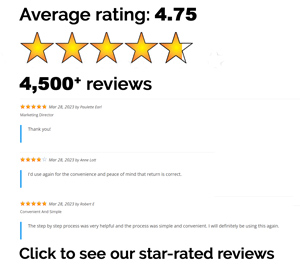Not too many people want to hear another peep about taxes once April’s over. But there’s a good reason to get a jump start on planning for next year. Many of the tax rules have changed and some money-saving maneuvers that have worked in the past, may no longer help you. Don’t panic. With a little planning, it’s still possible to ease your tax burden and avoid stress.
Adjust your withholding
Right now, you may be enjoying a small bump in your paycheck as a result of the new tax bill. But you may be able to put even more money in your pocket. That’s extra cash you can use to catch up on bills, build your savings or treat yourself to something nice. If you received a refund when you filed your tax return, it’s because you gave Uncle Sam more money than was necessary. You can hold on to more of your paycheck by adjusting your withholding. In exchange, you’ll receive a smaller refund at tax time. Unfortunately, some people receive a bill instead of a refund when they file. If you owed the IRS, you can pay more withholding each pay period to reduce your odds of paying again next year. Use a withholding calculator to determine the best course of action and submit a new W-4 to your employer, if necessary.
Familiarize yourself with the new tax laws
Last year, only about 30 percent of filers had itemized deductions. Now that many of the popular deductions have been eliminated or reduced, that number is expected to drop. Here’s a brief summary of what has changed:
- Tax preparation, work-related expenses and investment fees are no longer deductible.
- Moving-related deductions are eliminated for everyone except members of the military.
- Theft and casualty losses can only be claimed for federally declared disasters.
- Taxpayers can only claim up to $10,000 combined in state and local income, sales and property taxes.
- New homeowners can only deduct interest on mortgages up to $750,000. For those who purchased their home before December 15, 2017, the $1 million cap still applies.
Another reason itemizing may not be as beneficial is because the standard deduction has almost doubled across the board. The new rate is $12,000 for single filers, $18,000 for head of household and $24,000 for married couples. Remember, for itemizing to make sense, your expenses need to be more than the standard deduction. If you still think itemizing is worth the effort then be sure to hold on to the right receipts. For more details on what’s changing next year, check out “How will the new tax bill affect you?”.
Get organized
There’s nothing more annoying than knowing you have something and being clueless about where to find it. Losing valuable receipts can lead to missed savings opportunities at tax time. Therefore, it’s important to organize your receipts on a weekly basis and store them in a safe place. If you’re guilty of always misplacing things, consider downloading a receipt management app on your phone. This way, you can snap a picture of the receipt and categorize the expense right away.
Contribute to a retirement account
Saving for retirement not only sets you up for a brighter future, but it can also lower your tax bill by hundreds or thousands of dollars. The key is to contribute to tax-advantaged accounts like a traditional IRA or 401k. For 2018, the maximum you can contribute to an IRA is $5,500. Those 50 or older can contribute an additional $1,000 to the account for a maximum of $6,500. 401k’s on the other hand have a much higher contribution limit. Most people can contribute up to $18,500 for the year. But those 50 or older can contribute up to $24,500.
Pay your estimated taxes
These days, juggling a 9-5 and a side gig is a normal way to make ends meet. If you’re self-employed or freelance and expect to owe over $1,000 in taxes for earnings from your side gig, you may need to make estimated tax payments. Failing to do so can result in penalties. The IRS expects your quarterly payments by the following dates.
- First payment – April 17, 2018
- Second payment – June 15, 2018
- Third payment – September 17, 2018
- Fourth payment – January 15, 2019
Pre-register for next year
Want to get the biggest possible discount when you prepare and e-file your taxes next year? Pre-register now with ezTaxReturn. It takes two seconds to sign up and your discount will automatically be applied when you file next season. No coupon code necessary.




